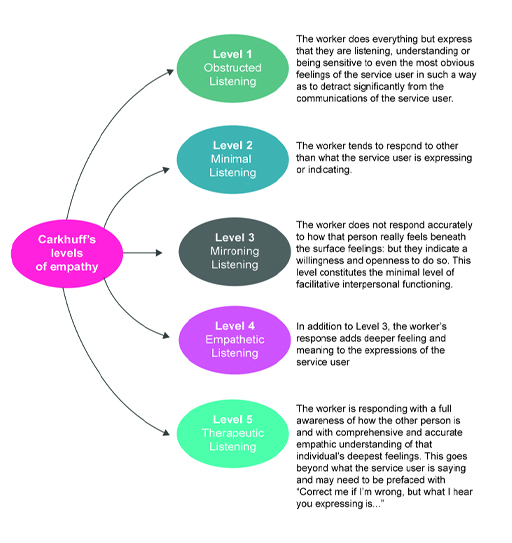4 Empathy
Empathy is one of the essential building blocks for understanding the experience of service users in order to help them more effectively. Sympathy expresses sorrow or compassion for another’s misfortune or difficult circumstances, but it does not necessarily lead to shared understanding. By contrast, Egan (1986, p. 95) defines empathy as: ‘The ability to enter into and understand the world of another person and to communicate this understanding to him or her’. Acquiring this kind of insight requires active listening, but more than this, Egan (1994, p. 106) observes: ‘empathy that remains locked up in the helper contributes little to the helping process’.
You might consider that empathy is more of a personal quality than a skill – thinking back to Lefevre’s (2010) knowing-being-doing model, perhaps it is more about ‘being’ than ‘doing’. You might also assume that it is something that all aspiring and qualified social workers possess. Surprisingly, research by Forrester et al. (2008) revealed shortcomings in social workers’ empathy skills when communicating with parents in child protection cases. This was of concern not only because empathy is a core skill but also because the study found that communicating empathy reduced resistance and enabled parents to share important information. Clearly it is worth exploring in greater depth how empathy, and the skill of demonstrating it, can be developed or improved. Social scientist Robert Carkhuff (cited in Koprowska, 2014) suggests that there are different levels of empathy, as can be seen in the figure below.

